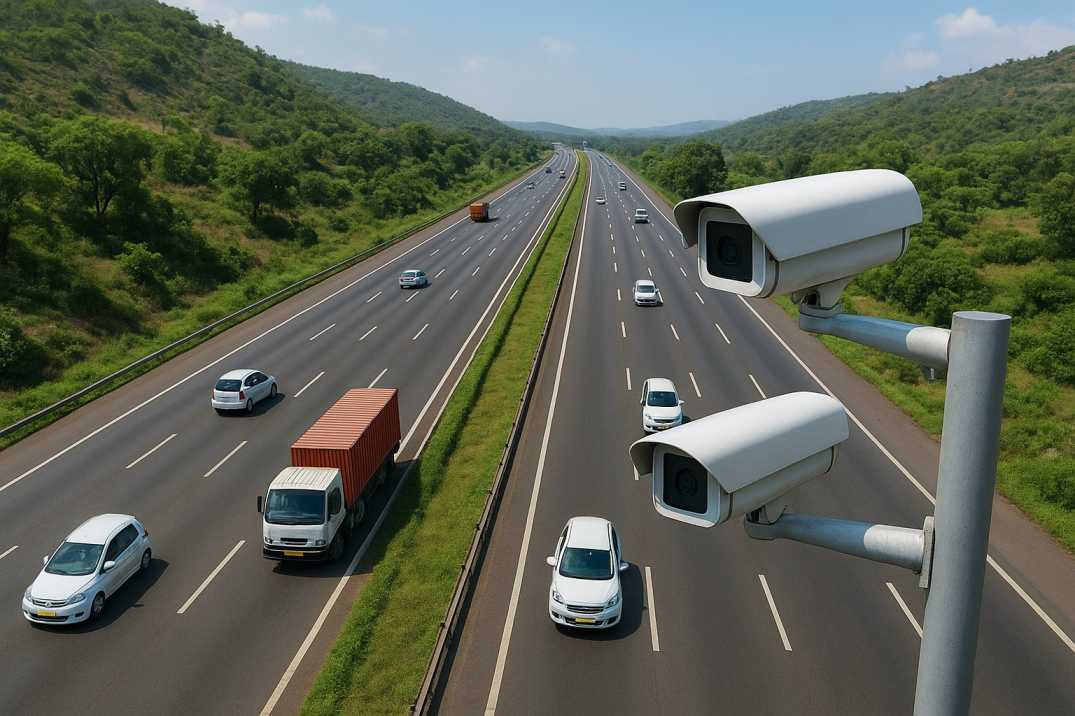Contact Us
RoadVision AI
Private Limited
Office No. 308 & 310, B Block
Ansal Chamber - 1, Bhikaji Cama Place,
Near Engineers India Limited (EIL) Bhawan, New Delhi - 110066
© 2024 | RoadVision AI | All rights reserved
India has one of the largest road networks in the world, and toll highways are its backbone, carrying millions of vehicles every day. According to the National Highways Authority of India (NHAI), toll revenue contributes significantly to maintaining and upgrading highways under programs such as Bharatmala Pariyojana. But with rising traffic volumes, congestion, accidents, and pavement stress, traditional monitoring systems are no longer sufficient.
This is where smart cameras, AI-driven analytics, and automated road inspection systems are transforming the way highways are monitored and maintained. These technologies are now central to road asset management India, making highways safer, more efficient, and cost-effective.

One of the busiest stretches in India, handling over 300,000 vehicles daily. Congestion at toll plazas has historically caused delays, but the adoption of FASTag and AI-powered monitoring is improving traffic flow and safety.
India’s first six-lane concrete, access-controlled expressway is among the most heavily used toll roads. AI-based traffic surveys and smart surveillance cameras help authorities manage high accident-prone zones and enforce speed regulations.
Famous for its high-speed corridor, this expressway has heavy toll collection. Smart cameras integrated with road safety audits are now used to monitor traffic violations, identify accident black spots, and improve enforcement.
Designed to reduce Delhi’s congestion, this toll road carries a massive share of freight and bypass traffic. With AI-driven automated road inspection, pavement conditions and traffic incidents are tracked continuously to ensure uninterrupted movement.
Critical to Southern India’s logistics, this road handles enormous truck traffic. By using smart highway roads India systems with cameras and digital sensors, authorities improve toll efficiency, reduce theft or leakages, and ensure accurate vehicle classification.
Smart cameras paired with AI detect cracks, potholes, and surface distress in real-time, making pavement condition surveys faster and more accurate than manual inspections.
Modern toll roads are equipped with AI-enabled surveillance cameras that record violations like overspeeding and lane indiscipline. This feeds directly into road safety audits to enhance safety.
Smart cameras integrated into a digital road maintenance system continuously capture data on traffic and road surface quality. This data improves decision-making in road asset management India, ensuring pavements last longer and toll operations remain profitable.
Data collected by automated systems supports road inventory inspection, enabling authorities to plan better upgrades, expansions, and safety measures.
The integration of AI, IoT, and surveillance forms the foundation of smart highways roads India. This ensures highways are not just toll collection corridors but advanced mobility networks that enhance user experience, safety, and sustainability.
RoadVision AI offers a suite of solutions designed for Indian road authorities, toll operators, and infrastructure companies:
India’s busiest toll roads carry millions of vehicles daily, making them vital to economic growth and connectivity. However, without modern monitoring, they face congestion, safety risks, and faster deterioration. Smart cameras, integrated with AI and digital road maintenance systems, are the future of road asset management India, enabling predictive care, safer travel, and efficient toll operations.
RoadVision AI is transforming infrastructure development and maintenance by harnessing AI in roads to enhance safety and streamline road management. Using advanced roads AI technology, the platform enables early detection of potholes, cracks, and surface defects through precise pavement surveys, ensuring timely maintenance and optimal road conditions. Committed to building smarter, safer, and more sustainable roads, RoadVision AI aligns with IRC Codes, empowering engineers and stakeholders with data-driven insights that cut costs, reduce risks, and enhance the overall transportation experience.
Book a demo with us to learn how RoadVision AI can help you modernize toll road monitoring and create truly smart highways and roads in India.
Q1. How do smart cameras help toll road monitoring in India?
They provide real-time data on traffic, violations, and pavement condition, improving enforcement and maintenance.
Q2. Are smart highways India projects already in place?
Yes, several expressways like the Eastern Peripheral Expressway use AI-powered monitoring and digital tolling.
Q3. Can AI reduce road accidents on Indian highways?
Yes, AI-enabled road safety audits help identify accident-prone spots and enforce traffic rules more effectively.